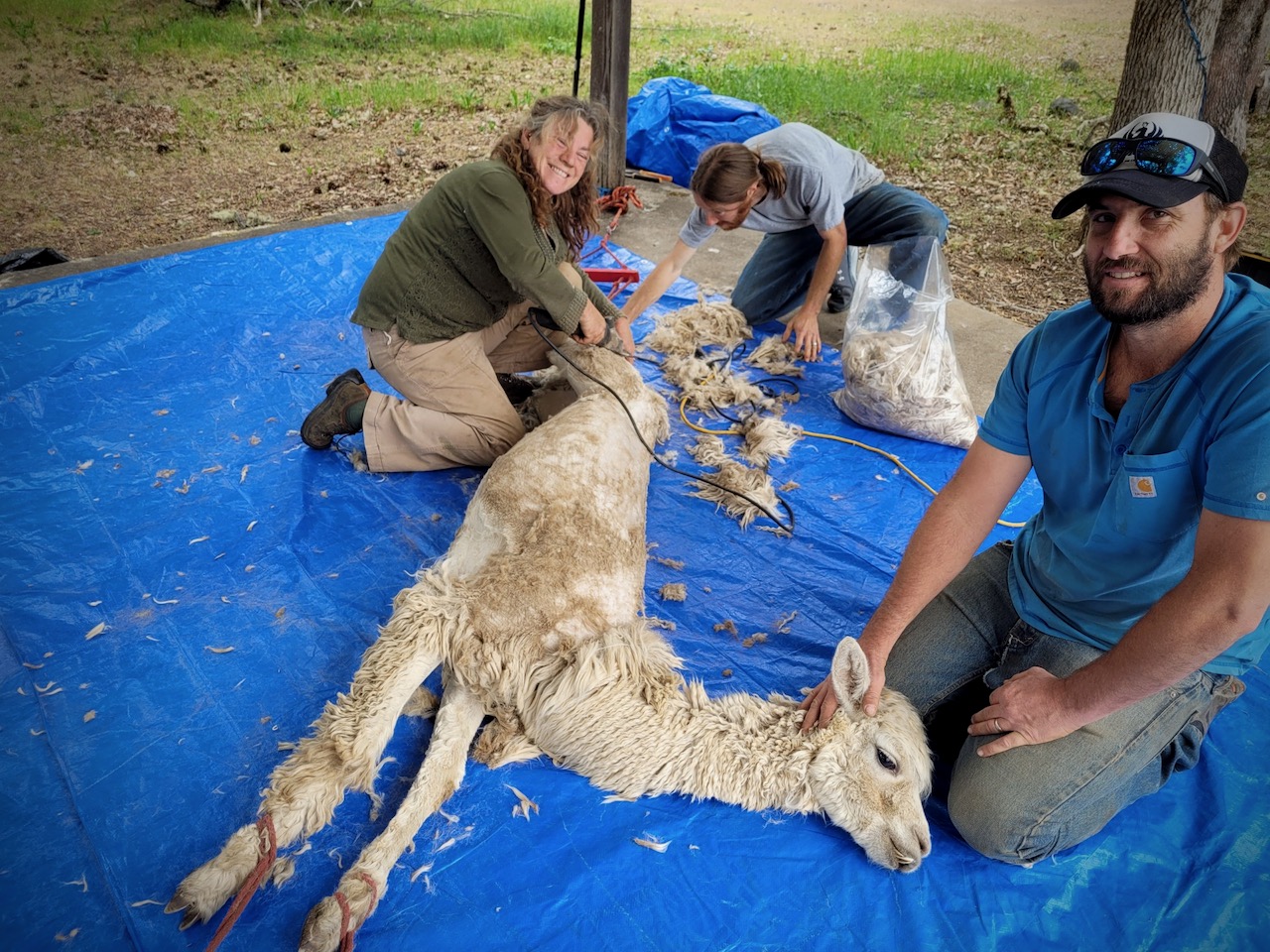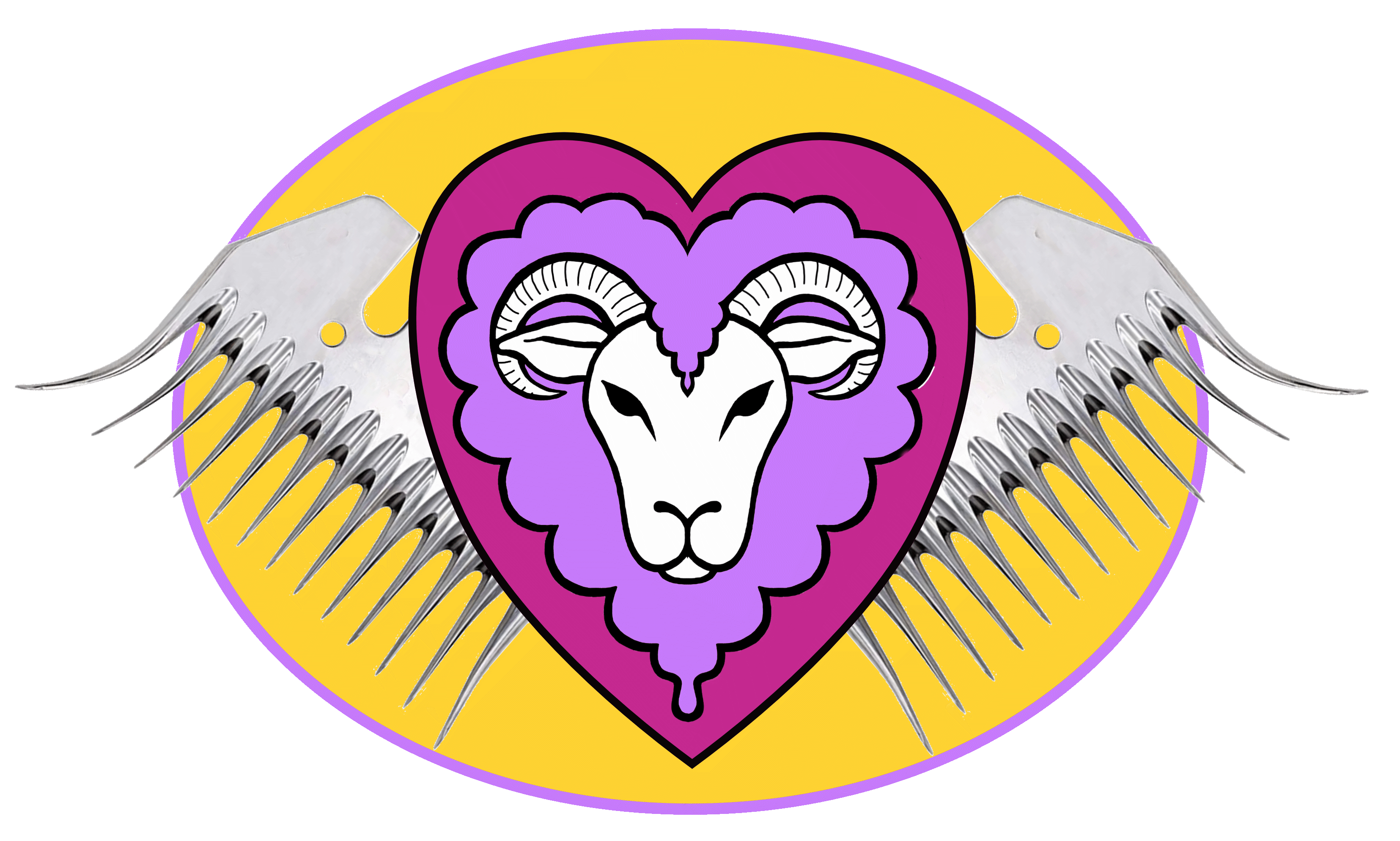Alpacas, Llamas & Goats
 PREPARE FOR SHEARING with everything set up BEFORE WE ARRIVE Animals caught, tarp laid out, electricity run etc. If you have questions about which area will be best for our shearing station, you are welcome to email or text pictures of the possibilities.
PREPARE FOR SHEARING with everything set up BEFORE WE ARRIVE Animals caught, tarp laid out, electricity run etc. If you have questions about which area will be best for our shearing station, you are welcome to email or text pictures of the possibilities.
Please be present and available for your shearing or provide helpers as specified
ALPACAS
Shearing Area. A dry, flat, shaded area of at least 12 feet square where the animal can be stretched out on a tarp on the ground and the shearer and helpers have room to move about. We need a post, beam or other tie down spot on either side of the tarp, close to the ground to affix the hobbles. A fence post, barn beam or trees can work and if nothing else is available be prepared to pound stakes or posts for this purpose.
Electricity must be available at the shearing area. An outlet or extension cord with three prong plug
Your animals should be as clean as you can make them. This increases the value of the shorn fiber and makes shearing easier. You can blow alpacas out with a leaf blower, brush them or run your hands through the fiber to release dirt and dust.
Sorting. If fiber quality is essential, sort your animals for shearing from light to dark. We don’t care if males and females are mixed, just be sure to make us aware of their gender, so we take care around the important bits.
Helpers. For 1-2 animals 1 helper is fine. For herds 3-10, we require a minimum of 2 people on hand to help, although 3 is even better. Herds over 10, 3 helpers required. Helpers will bring the animals to the shearing floor, assist with hobbling, help restrain the animal during shearing, collect fiber and clear the shearing floor between animals. We will train inexperienced helpers with clear instructions and we will work as a team to get this done!
Catching & bringing animals. Owners/helpers are required to bring the animals to the shearing floor. Animals not should be caught in a small pen before my arrival. We will not catch your animals and do not want to wait while you chase them in the field
Fiber. Fiber can be sorted as it comes off the animals into prime & waste or firsts, seconds and thirds. Be prepared to catch and bag your fleece and to clear the tarp between each animal with a broom or blower.
Things You Will Need
~ A heavy duty tarp to lay your alpacas down. Minimum size 10 x12.
~ (If you are collecting fiber for use) Large plastic garbage bags to hold the shorn fiber- clear bags are best. You will need three bags for each animal. Blanket fiber in one bag, neck and upper leg in another, then a third bag for the trimmings, ends and contaminated fiber, the third bag can be used for multiple animals
~ Zip lock sandwich bags if you would like to collect a fiber sample from each animal
~ Permanent marker to mark bags
~ Broom or blower to clean tarp after each shearing.
~ Towels for the nervous alpacas that have “accidents” during shearing…this will help keep your fleece clean.
~ Power cord run to the shearing area.
LLAMAS
Llamas are shorn standing. They should be caught and haltered before our arrival and brought to the shearing area where they can be tied securely to a gate or paddock.
Electricity must be available at the shearing area. Outlet or electrical cord run
Llamas are strong animals with varying temperaments. We do our best to shear thoroughly but will not shear legs if we are in danger of being kicked. Toes of Llamas will not be trimmed unless owners demonstrate they are gentle and their feet can be held.
GOATS
Please have your goats caught in a small space and haltered before we arrive. We need a 4 x 8 plywood board or 10 x 10 tarp spread in the shade to shear on. Shearing area should be close to where the goats are penned, so we don’t need to drag them across a wide space and electricity should be available at the shearing area via outlet or 3 prong power cord. Goats are generally sheared laying down on their side. Please provide one helper to help restrain.
